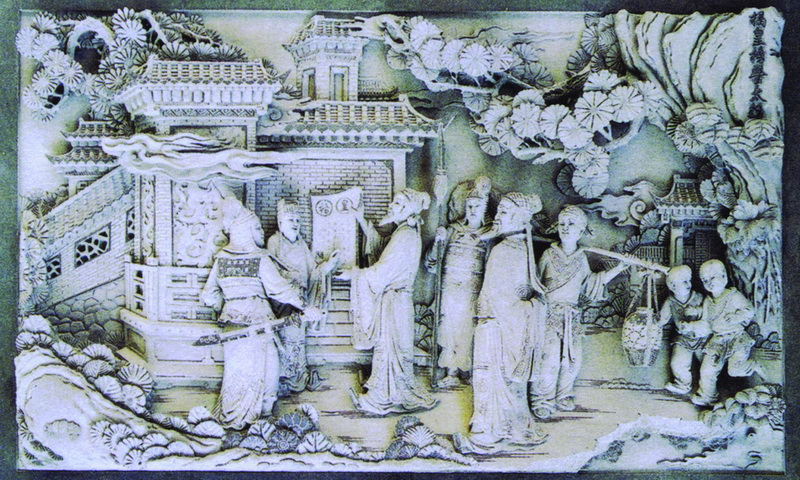
The Huian stone carving artwork. [Photo/]fujian-szwhg.chaoxing.com]
Huian stone carving, primarily practiced in Huian county of Quanzhou, Fujian province, was among the first entries in the traditional arts category on the national list of intangible cultural heritage items .
Huian stone carving traces its artistic origins to the Central Plains culture of the Yellow River Basin. During its formative development, it assimilated elements from both Minyue culture and exotic influences introduced via the Maritime Silk Road, while maintaining an intrinsic connection with architectural artistry. This synthesis gradually cultivated its distinctive aesthetic style.
The craft reached high levels of sophistication during the Song (960-1279) and Yuan (1271-1368) dynasties, achieving full maturity after the late Ming period (1368-1644). Today it stands as the preeminent stone carving tradition in southern China.
Huian stone carving encompasses five major categories: stele processing, garden sculpture, architectural components, artistic carving, and utilitarian vessels. Its techniques are principally classified into five types: circular carving, relief carving, line engraving, sunken carving, and shadow carving.
Primarily applied in temple architecture, religious statues, tomb monuments, urban sculptures, and functional furnishings, these works maintain a strong utilitarian foundation. The craft predominantly utilizes granite as its primary medium.
The manufacturing process systematically follows four key procedures: kneading (material preparation), piercing (hollowing), extracting (rough shaping), and fine carving (detail refinement).
Huian stone carving has deep cultural roots and strong historical significance. As the leading example of southern China’s stone carving tradition, it was among the first to gain international recognition and holds a respected place across Southeast Asia and beyond.

Copyright © General Office of Fujian Provincial People's Government
Website Identification Code 3500000049Registration Number: 15003084
All rights reserved. The content (including but not limited to text, photo, multimedia information, etc) published in this site belongs to fujian.gov.cn.
Without written authorization from fujian.gov.cn, such content shall not be republished or used in any form.